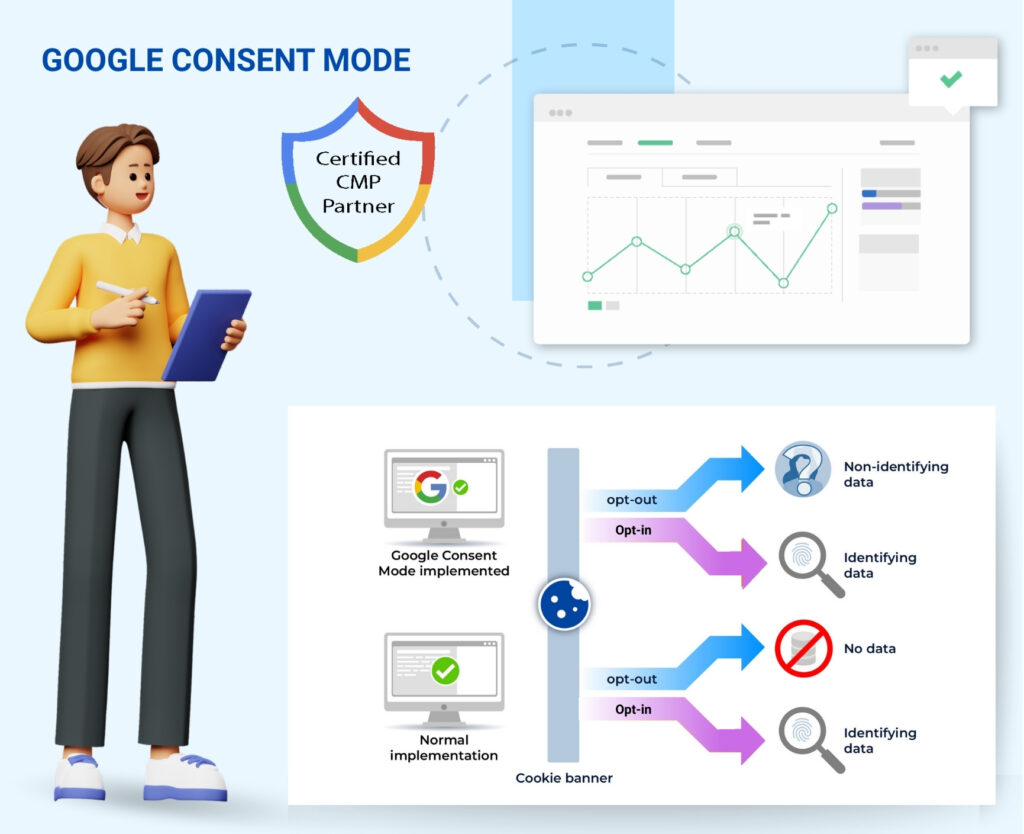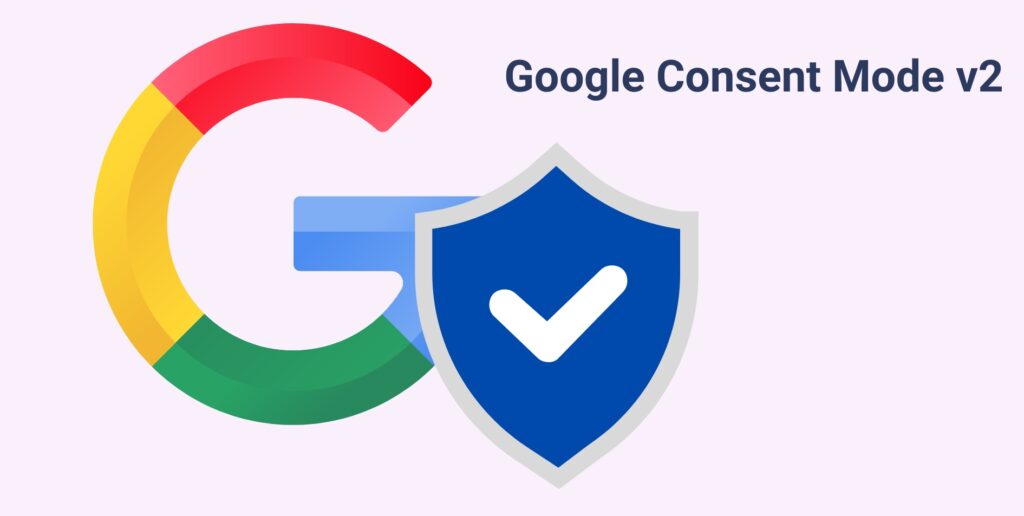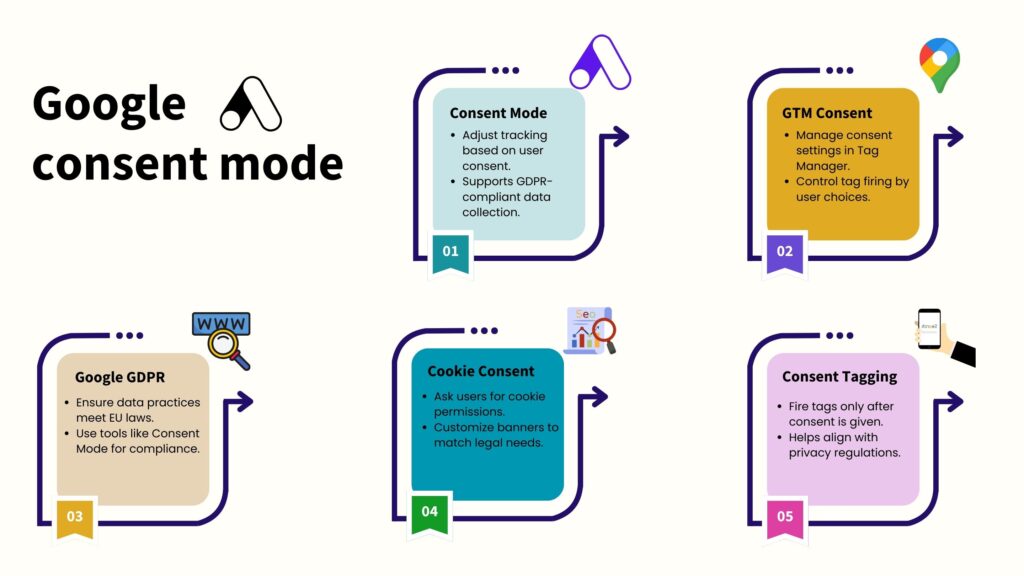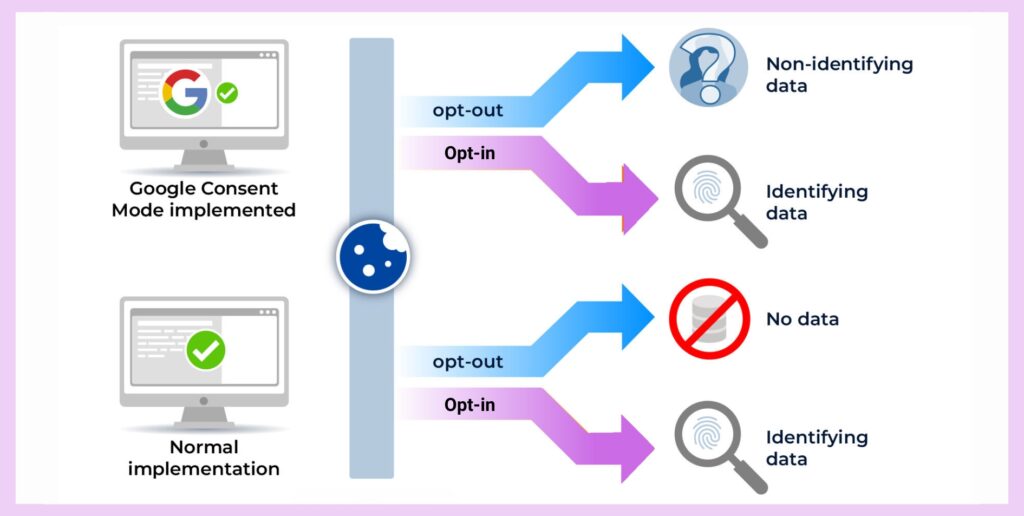
Our Services
Enable privacy-friendly tracking with Consent Mode and GTM consent setup. Stay compliant with Google GDPR rules using smart cookie consent and consent tagging to respect user choices while still gathering valuable insights.
Google Consent Mode v2

Google Tag Manager Consent Mode
Google Tag Manager Consent Mode enables user consent-driven management of tags. Your site is kept GDPR compliant while you continue to capture valuable marketing and analytics data through a privacy-friendly and flexible setup.

Consent Mode implementation
If you wish to track the required data without undermining the user’s privacy, the Consent Mode implementation is what you should use. It tailors tag operations in line with user consent and thereby guarantees adherence to GDPR as well as a dramatic improvement in the data’s precision for Google Ads and Analytics.

Google Consent Mode – A Complete Guide for Website Owners
So you run a website uses tracking things such as Analytics or Ads right? Bet you heard bout Consent Mode. Website owners need a plan about user data as global privacy rules tighten, so handling it legally and openly is key. Think about it; Google Consent Mode? That’s its purpose. This guide breaks down, how it works, and why it matters to your site, making it part of a solid implementation.
It’s like a tool from Google; your site uses it to tweak Google tags based on what users consent to. Designed for helping businesses meet privacy and data protection needs like GDPR compliance for Europe’s GDPR while gaining insight from website visitors, it’s pretty valuable.
If folks land on your site, asking about cookies or tracking? Yeah, that might be helpful. helps your tags respect user choices. So, if people don’t want advertising cookies set, your tags adapt and won’t set those specific cookies, but can still grab anonymous data when it’s okay, making it a smart GCM setup.
So why would you care about anyway?
To measure performance and improve user experience many websites use tools such as Google Analytics or maybe Floodlight. But hey without asking users some tracking could get stopped or cut back. Gaps in your data? You might not see how visitors use your site so well, even with GCM for analytics.
It can help here, allowing some data collection minding user consent. So, can respect privacy rules, still get data? Model conversions even if denied? That’s where conversion modeling helps. Make sure Google tags play nice? lets you balance compliance with keen insights.
So, how does actually work?
Consent Mode? It changes Google tag functions depending on consent signals. Once users decide on analytics or ads preferences, your tags change based on their choice. This is part of a proper GCM integration.
Say user agrees with analytics cookies but not ads? Google Analytics gets full data while ad tags avoid setting cookies.
If user declines cookies tags operate cookieless sending anonymous pings; aggregated Google reports remain possible. This setup works seamlessly with GCM with Google Tag Manager if you prefer managing tags that way.
This way you respect users’ choices, while still getting insights privacy rules permit.
GCM? It knows about two consent areas like ad stuff such as cookies.
Analytics storage controls data related analytics; think cookies for measuring site engagement. That’s why clear GCM privacy settings matter.
Set your preferences; consent choices should then tell Google tags how they must adjust. You can follow a GCM configuration guide to get this right.
To implement GCM, add code to your site besides setting configuration for working along a consent management platform. Here’s basically how these steps work: Get a solution so users can set things how they like, okay? Lots of CMPs work fine with Consent Mode; Cookiebot, OneTrust; even your own setup should be good.
This part’s crucial so add subtle grammar tweaks, not quite textbook perfect. Make sure GCM code snippet loads before any Google tags actually fire. This code? Lets Google tags know current consent status, for behavior true to you. See, here’s how it might appear:
javascript
CopyEdit
gtag(‘consent’, ‘default’, {
‘ad_storage’: ‘denied’,
‘analytics_storage’: ‘denied’
});
It sets default consent behavior. After someone picks, make sure consent’s status updates.
Go for simpler everyday language but don’t go overboard with slang while still keeping true to your style. So a user picks say analytics but not ads make sure settings in get updated to user choice. Double-check your setup using Google Tag Assistant or comparable tools; you want your tags responsive to consent signals. Plus data should flow like it should without messing with what users want so check reporting.
For best use of, set clear defaults ensuring initial consent meets compliance.
Make sure users understand what they’re agreeing to by providing consent options easy to understand.
Make absolutely sure of ongoing compliance; check implementation after updates or changes you make in your CMP or tags.
For cases lacking consent you might try conversion modeling, which helps estimate performance.
It can really help you track conversions. Google might still use data they’ve mashed together even if users say “no,” to guess at conversions using machine learning. Filling reporting gaps should help show clear marketing performance insight, staying true to you and privacy laws.
Privacy laws evolve so think becomes key for responsible digital marketing. Use Google Consent Mode, see how you respect user privacy while still learning what is needed so your business can truly grow. Setting up a system is pretty straightforward, and well, compliance boosts data quality and user trust, making it worth some effort.
For help maybe check some specialists who know with Google Tag Manager, right? Make sure your site stays compliant and you’re making informed data decisions, with setup just right.
Google Consent Mode Privacy-Compliant Tracking Made Easy
Control how your tags act according to user consent and maintain GDPR compliance while still being able to capture critical marketing and analytics data.
FAQ
What is Google Consent Mode v2, and why is it important?
Google Consent Mode v2 lets your website adjust how tags behave based on user consent choices. It helps you stay privacy-compliant while still collecting valuable data from tools like Google Ads and Analytics.
Do you help with Consent Mode implementation?
Indeed! We take care of complete Consent Mode implementation so that your tracking tags are properly configured using Google Tag Manager and act based on each visitor’s consent settings.
Can you integrate cookie consent with Google tools?
Indeed. We integrate cookie consent solutions into Google services so that your site runs seamlessly with Consent Mode and respects users’ decisions and is legally compliant.
Is Google Consent Mode GDPR compliant?
Indeed. Configured properly, GCM facilitates GDPR compliance by deferring or altering tracking based on consent, allowing you to ensure user privacy and comply with regulations.
Do you implement Consent Mode through Google Tag Manager?
We do! Using Google Tag Manager Consent Mode, we manage tag behavior dynamically, based on user consent, so your tracking remains effective and compliant without manual coding.

